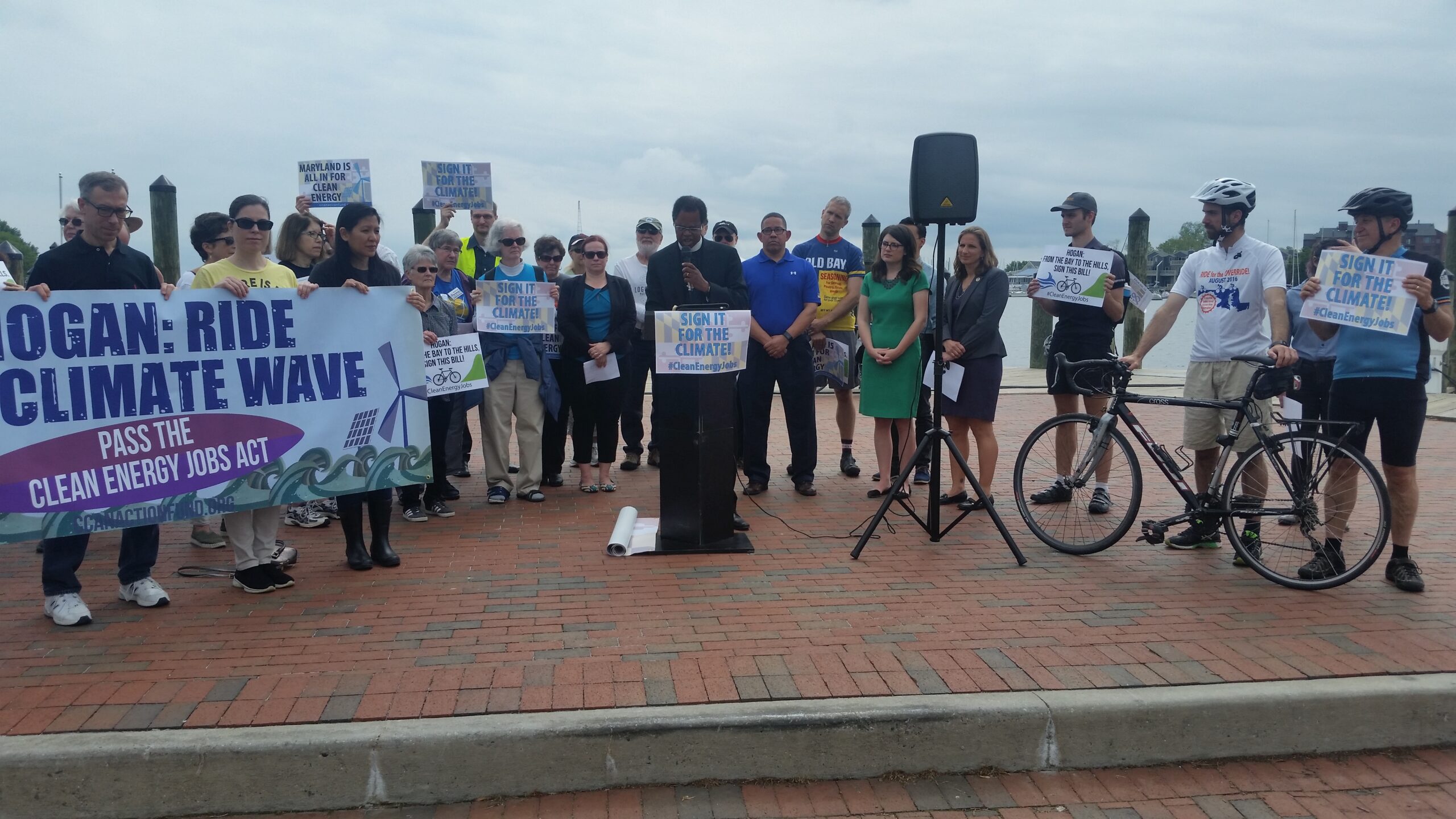Backers of Clean Energy Bill Use Hogan’s Op-Ed on State Climate Change Action as Political Weapon

In a Washington Post commentary that he co-wrote in December with Virginia Gov. Ralph Northam (D), Gov. Lawrence J. Hogan Jr. (R) argued that states must take the lead in fighting climate change because the Trump administration won’t acknowledge the danger and the federal government is so dysfunctional.
“Our most important job as governors is ensuring the safety of our constituents,” the governors wrote. “So when we face a threat to people’s livelihood and way of life, showing leadership means acknowledging the risk and addressing it. Climate change hits Democrats and Republicans alike, and we need to work together, despite our differences, to stop it.”
Since the two governors published the op-ed, both houses of the Nevada legislature unanimously passed a bill to require electric utilities to use 50 percent renewable energy by 2030 and sets a 100 percent goal by 2050. Gov. Steve Sisolak (D) signed it into law on Earth Day.
Also on Earth Day, the Washington state legislature passed a measure that ensures the state will use 100 percent clean electricity by 2045. Gov. Jay Inslee, a Democratic candidate for president, signed the bill into law last week.
And in New Mexico earlier this year, the legislature passed a bill establishing a 100 percent clean energy target by 2045 – and the Public Service Company of New Mexico, the leading electric utility, announced it would transition its own power generation to 100 percent clean energy by 2040 – five years sooner than the state’s deadline.
Now, according to the Chesapeake Climate Action Network, one in five Americans live in states or cities that have committed to 100 percent clean energy usage.
Is Maryland ready to join that company?
With these developments as a backdrop, the spotlight returns to Hogan, and whether he will sign the Clean Energy Jobs Act, legislation that would establish a 50 percent renewable portfolio standard for electric utilities by 2030.
As they fan out across the state trying to pressure Hogan into signing the legislation, carrying signs that say “Sign it for the climate,” environmental groups, clean energy advocates and green lawmakers view the governor’s recent Post piece as written evidence that he ought to back the bill – and suggest that if he vetoes it, he was overstating his commitment to combating climate change in print.
Signing the measure “is completely consistent with the op-ed he wrote in The Washington Post,” said Sen. Brian J. Feldman (D-Montgomery), sponsor of the Clean Energy Jobs Act.
Jamie DeMarco, a state-level carbon pricing coordinator for the Citizens Climate Lobby who rode his bike from Annapolis to Frederick last week to raise about the legislation, put a slightly harder edge on the equation.
“We’re trying to separate sincerity from spin,” he said. “We don’t want our governors spinning us in Maryland. The only things that should be spinning are bicycles and windmills.”
Steven P. Chan, a solar energy system designer with New Energy Equity, made a direct appeal to Hogan, equating the fight against climate change with Hogan’s battle against cancer.
“You have overcome a lot of obstacles in your life,” he said during a rally last week. “I’m telling you that this is that sort of challenge.”
With about 10 days left to decide the fate of the Clean Energy Jobs — he can sign it, veto it, or let it become law without his signature — Hogan is still pondering his options, a spokesman said in an email.
“Governor Hogan is proud of Maryland’s commitment to environmental stewardship, and he is giving this legislation the thoughtful consideration it deserves,” said Michael Ricci, Hogan’s communications director.
The Hogan administration regularly promotes its environmental record, which includes joining a bipartisan coalition of states committed to matching or exceeding the greenhouse gas reduction goals of the international Paris climate agreement; taking a leadership role in the Regional Greenhouse Gas Initiative; and multiple measures to improve the health of the Chesapeake Bay.
But supporters of the clean energy legislation are well aware that Hogan vetoed a bill in 2016 requiring electric utilities to get one-quarter of their energy supply from renewable fuels. The legislature overrode the veto in 2017, and that 25 percent RPS standard has been in place since then.
In his first term, Hogan shied away from measures that would have led to tax increases or higher utility bills for consumers. And allies said he is aware that the process to pass the Clean Energy Jobs Act this year was messy and that some environmentalists aren’t completely happy with the bill.
But supporters of the clean energy bill hope that without having to worry about reelection, Hogan will embrace the measure even with modest increases on consumers’ utility bills — estimated at about $1.50 a month per household. And they argue that the global debate and scientific evidence on climate change have changed drastically since 2016.
“The world is on fire,” Chan said.




 Creative Commons Attribution
Creative Commons Attribution